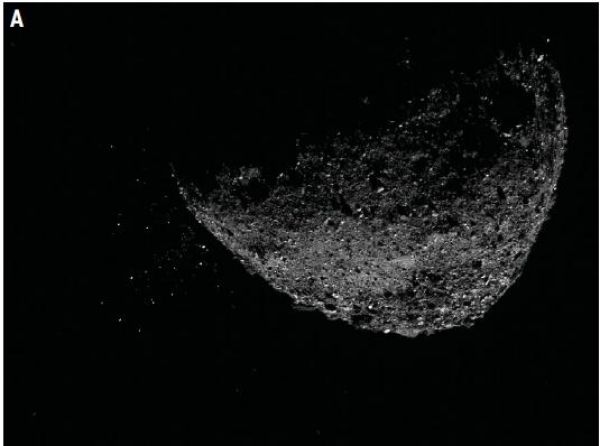Shortly after NASA’s OSIRIS-REx spacecraft arrived at asteroid Bennu, an unexpected discovery by the mission’s science team revealed that the asteroid could be active, or consistently discharging particles into space. The ongoing examination of Bennu – and its sample that will eventually be returned to Earth – could potentially shed light on why this intriguing phenomenon is occurring.
The OSIRIS-REx team first observed a particle ejection event in images captured by the spacecraft’s navigation cameras taken on Jan. 6, just a week after the spacecraft entered its first orbit around Bennu. At first glance, the particles appeared to be stars behind the asteroid, but on closer examination, the team realized that the asteroid was ejecting material from its surface. After concluding that these particles did not compromise the spacecraft’s safety, the mission began dedicated observations in order to fully document the activity.
“Among Bennu’s many surprises, the particle ejections sparked our curiosity, and we’ve spent the last several months investigating this mystery,” said Dante Lauretta, OSIRIS-REx principal investigator at the University of Arizona, Tucson. “This is a great opportunity to expand our knowledge of how asteroids behave.”
After studying the results of the observations, the mission team released their findings in a Science paper published Dec. 6. The team observed the three largest particle ejection events on Jan. 6 and 19, and Feb. 11, and concluded that the events originated from different locations on Bennu’s surface. The first event originated in the southern hemisphere, and the second and third events occurred near the equator. All three events took place in the late afternoon on Bennu.
Read more at NASA/Goddard Space Flight Center
Image: This view of asteroid Bennu ejecting particles from its surface on January 6 was created by combining two images taken by the NavCam 1 imager onboard NASA's OSIRIS-REx spacecraft: a short exposure image (1.4 ms), which shows the asteroid clearly, and a long exposure image (5 sec), which shows the particles clearly. Other image processing techniques were also applied, such as cropping and adjusting the brightness and contrast of each layer. (Credit: NASA/Goddard/University of Arizona/Lockheed Martin)


